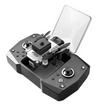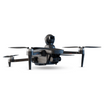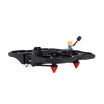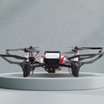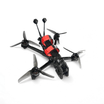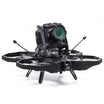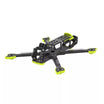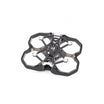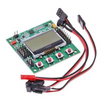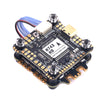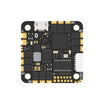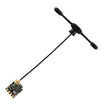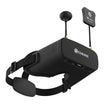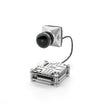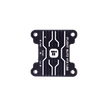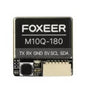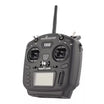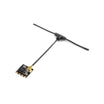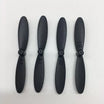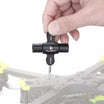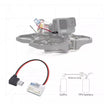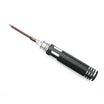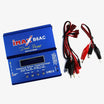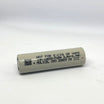Warfare is changing, and the most dramatic shift is happening above the battlefield. Unmanned aerial systems, once limited to surveillance and intelligence roles, are now taking on a more aggressive function i.e., combat.
Today, combat drones are fully operational weapons that can strike, support, and outmanoeuvre threats faster than ever before.
Global militaries, including India’s, are quickly adapting to this shift. Whether it is cross-border operations or internal security threats, drones equipped for attack missions are becoming critical assets in tactical planning and execution.
What Are Combat Drones and How Do They Work?
Combat drones, also referred to as armed unmanned aerial vehicles, are designed to carry and deliver precision strikes. Unlike traditional drones used only for reconnaissance, these are capable of engaging hostile targets on the spot.
They typically include real-time video transmission, advanced GPS navigation, encrypted communication, and payload capacity for munitions. Some are operated remotely via FPV (First Person View), while others can perform semi-autonomous missions using pre-fed coordinates and onboard AI.
Their primary advantage is clear and that is to execute high-risk operations without putting human lives in direct danger. From tracking moving convoys to neutralising enemy hideouts, combat drones offer both reach and speed that conventional systems often cannot match.
Also read: How insideFPV fits in India’s leading drone defense future
Key Capabilities That Define Combat Drones
The modern battlefield is unpredictable, often taking place in rough terrain or urban areas where traditional equipment has limited visibility. Combat drones fill this gap with a unique combination of features:
Precision Targeting
These drones are engineered to lock onto a target in real time and deploy munitions with minimal collateral damage. Their ability to hover, circle, and strike makes them suitable for complex environments.
All-Terrain Adaptability
Combat drones can operate in forests, mountains, deserts, and even snow-covered regions, giving commanders a significant edge in deployment planning.
FPV and Manual Control
With First Person View navigation, pilots can visually operate the drone using goggles, allowing for split-second decisions during engagement.
Payload Flexibility
Depending on the mission, combat drones can carry mini-missiles, grenades, or mortars with explosive capacity ranging from 200 to 500 grams. This allows for quick customisation based on tactical needs.
Also read: Night-time combat drones: Infrared & thermal tech in action
Real-Time Strike Capability: A Revolutionary Change for Conflict Zones
The most important advantage of combat drones lies in timing. They can identify, track, and eliminate threats in minutes. In contrast, traditional air or ground support might take hours to reach and engage.
In high-risk zones, this speed can mean the difference between a mission’s success and failure. By offering aerial dominance without human exposure, combat drones have become a preferred tool for both preemptive strikes and rapid retaliation.
Many armed forces now integrate these drones into their standard operating procedures. This has shifted the dynamics of how operations are conducted, from border patrolling to coordinated ground support.
Trikaal Max: India’s Big Leap in Combat-Ready Drones
At Inside FPV, we’ve always believed that drones can do more than just fly, they can protect, defend, and make a real difference where it matters most.
That belief is what led us to build Trikaal Max, our most advanced drone yet.
Trikaal Max was created to meet the growing demand for homegrown defense tech that can match global standards. It started as a high-performance surveillance drone, but quickly evolved into something much more powerful.
Today, it’s a fully combat-ready system, designed, built, and tested right here in Surat.
What sets it apart is its dual role in real-world missions. It first scans the battlefield with precision, and the moment a threat is confirmed, it switches to strike mode, all without losing a second. The drone can carry 5 to 6 mini-missiles or grenades, each capable of delivering up to 500 grams of explosive payload, and it flies at speeds of 200 kilometres per hour.
Pilots use FPV goggles to guide it in real time, which means better accuracy and tighter control in fast-moving situations.
Also read: Trikaal Max Drone: India’s strike-ready war machine
Kamikaze Drones and Single-Use Strike Missions
Another category gaining traction in modern combat is the kamikaze drone. These are designed for one-time use. They carry explosives and crash into the target, destroying both the objective and themselves in the process.
This method has proven effective in scenarios where high-value targets need to be eliminated without the risk of retrieving equipment or exposing personnel. While the concept was popularised globally, we have now developed cost-efficient, made-in-India kamikaze drones for local requirements.
They are ideal for bunker penetration, urban warfare, and counter-insurgency missions, giving forces a reliable solution for high-impact, time-sensitive tasks.
Also read: Best Kamikaze drones in the world: How Indian models compare
Combat drones have become a symbol of the new military era i.e., fast, efficient, and lethal when needed. Their ability to combine surveillance with real-time strike capability has changed how missions are planned and executed.
Frequently Asked Questions
What is the main difference between combat drones and surveillance drones?
Combat drones are built not only for observation but also for offensive missions. They can detect and engage targets, while surveillance drones are mainly used for data collection and monitoring.
How are combat drones operated during missions?
Most combat drones are remotely operated using control systems or FPV goggles, offering real-time control for precision engagement.
Is India developing its own combat drones?
Yes, companies like Inside FPV have developed indigenous combat drones such as Trikaal Max, which are already seeing interest from the Indian Army.
Are combat drones used in internal security operations?
Yes, combat drones are being explored for counter-insurgency, border security, and urban surveillance by Indian agencies.

